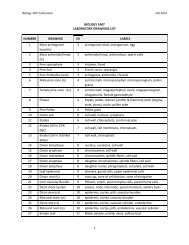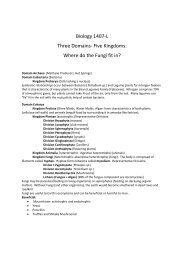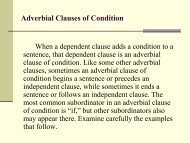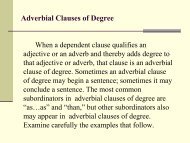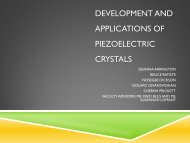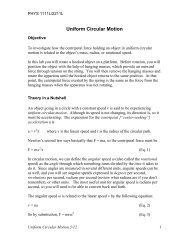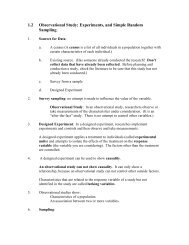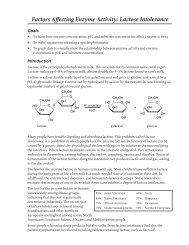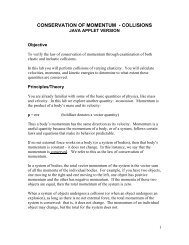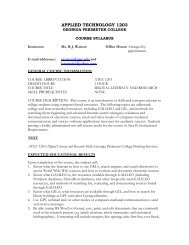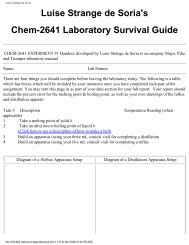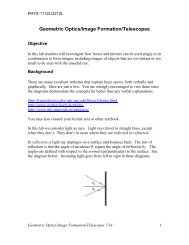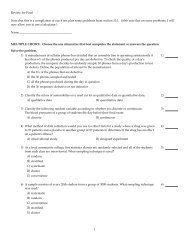Wittig Synthesis of trans-9-(2-phenylethenyl)
Wittig Synthesis of trans-9-(2-phenylethenyl)
Wittig Synthesis of trans-9-(2-phenylethenyl)
Create successful ePaper yourself
Turn your PDF publications into a flip-book with our unique Google optimized e-Paper software.
Exp 39.1 <strong>Wittig</strong> <strong>Synthesis</strong> <strong>of</strong> <strong>trans</strong>-9-(2-Phenylethenyl)anthracene 2<br />
Final Steps:<br />
1. Determine the % yield <strong>of</strong> <strong>trans</strong>-9-(2-<strong>phenylethenyl</strong>)anthracene.<br />
2. Determine the mp.<br />
3. Turn in your product in a labeled vial.<br />
Notes:<br />
A. The dropwise addition <strong>of</strong> 1.5 mL <strong>of</strong> 50% NaOH should take about 1-2 minutes.<br />
B. The exact amount <strong>of</strong> water and methylene chloride required for quantitative <strong>trans</strong>fer <strong>of</strong> the reaction is<br />
not critical. What is important is that the <strong>trans</strong>fer be complete.<br />
C. Normally, organic layers are the upper layer. Halogenated solvents such as methylene chloride are<br />
higher density than water and will be the lower layer.<br />
D. There is no danger <strong>of</strong> evaporating the product during the evaporation <strong>of</strong> methylene chloride step, but<br />
be certain to set the sand bath temperature to a moderate temperature sufficient to evaporate the<br />
methylene chloride, which boils at 40°C. Too high a sand bath temperature can cause the <strong>Wittig</strong><br />
product to decompose and blacken, especially after the solvent has completely evaporated and the flask<br />
is allowed to become hot.<br />
E. When recrystallizing any compound, always allow the solution to cool slowly on its own in the<br />
beginning. The paper towel and inverted beaker are precautions to help slow down the rate <strong>of</strong> cooling<br />
and allow fewer nucleating crystals to form at the beginning, which then grow to larger well formed<br />
crystals <strong>of</strong> high purity and predictable mp. If the solution is cooled too quickly, the solid will “crash”<br />
out <strong>of</strong> solution sometimes along with impurities into micro sized powder particles <strong>of</strong> lower quality.<br />
F. The mp is sufficient in this case to confirm the product.<br />
Waste & Clean Up:<br />
1. Into Mr. White: All aqueous washings; organic residues; and acetone rinses <strong>of</strong> dirty equipment<br />
2. Halogenated Waste: All mixtures <strong>of</strong> halogenated containing waste, i.e. methylene chloride, CH 2 Cl 2 .<br />
Prep Room Instructions:<br />
For a class <strong>of</strong> 24 students<br />
1. 9-anthraldehyde 15 g<br />
2. benzyltriphenylphosphonium chloride 25 g<br />
3. 50% NaOH 40 mL<br />
4. stir bars 24<br />
5. anhydrous Na 2 SO 4 bottle<br />
6. pentane 500 mL<br />
7. methylene chloride, CH 2 Cl 2 500 mL<br />
8. 2-propanol 500 mL<br />
9. 42.5 mm filter paper box



